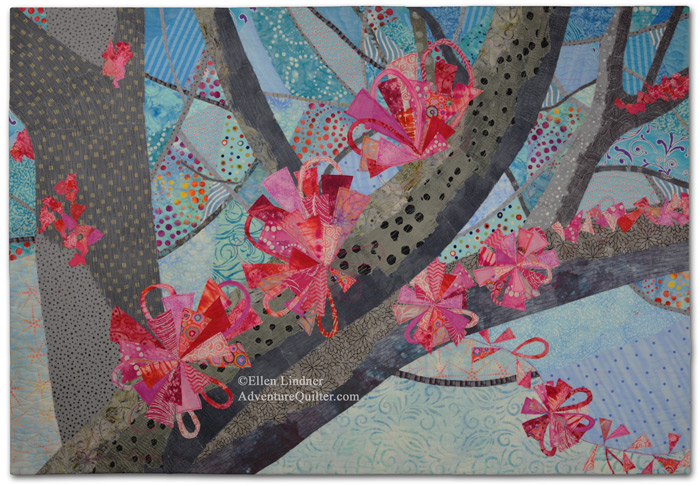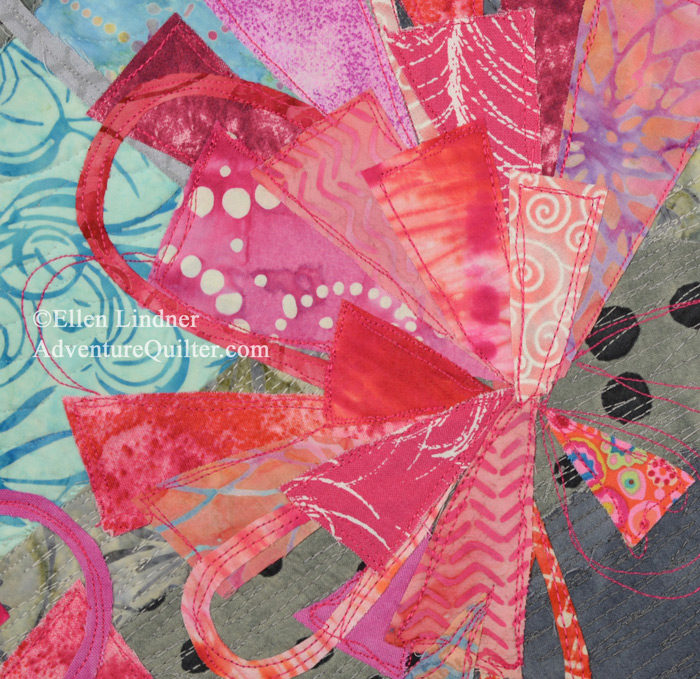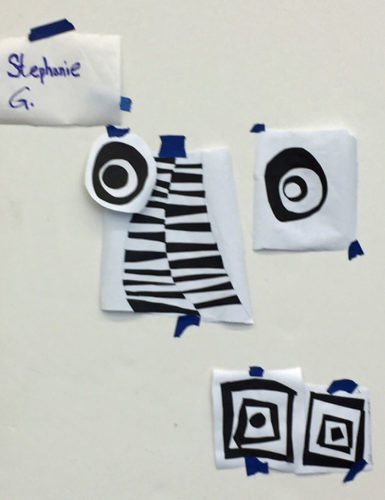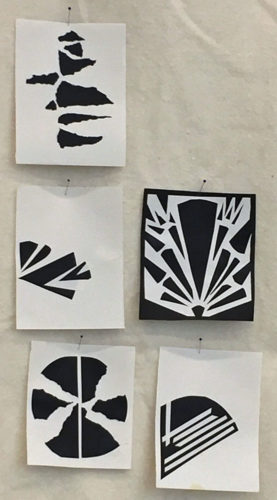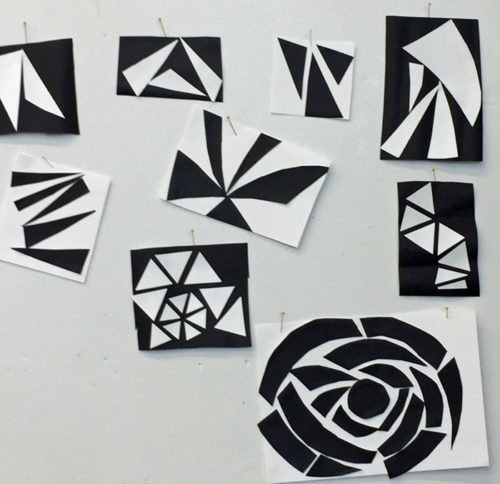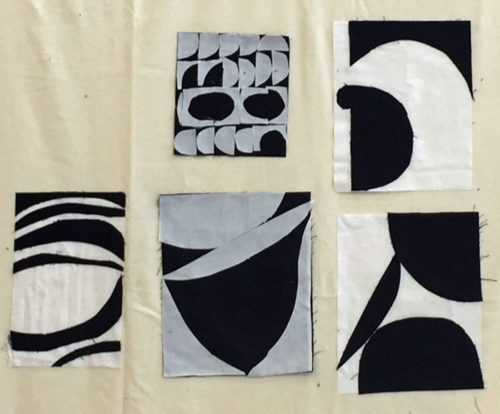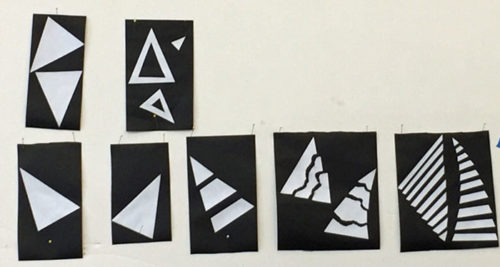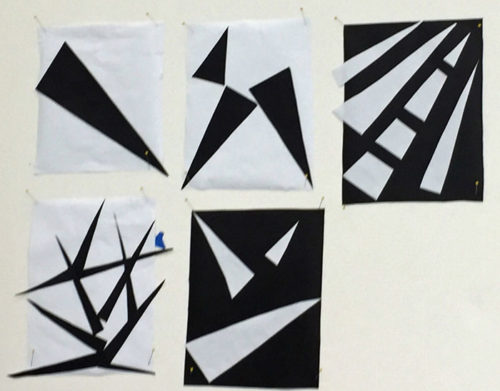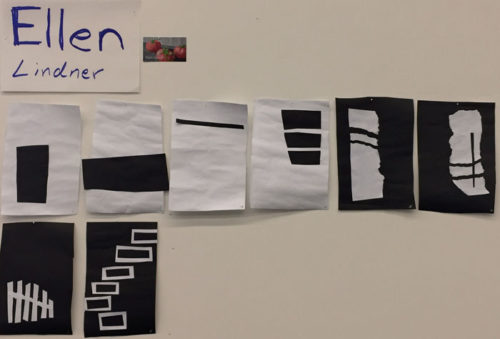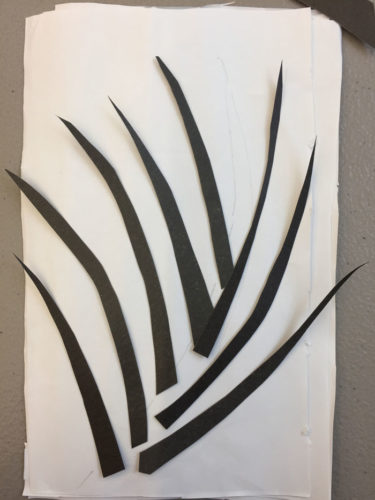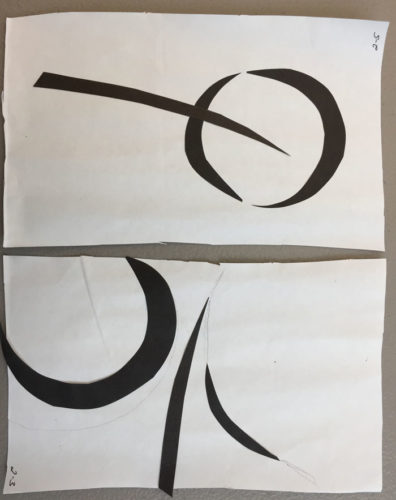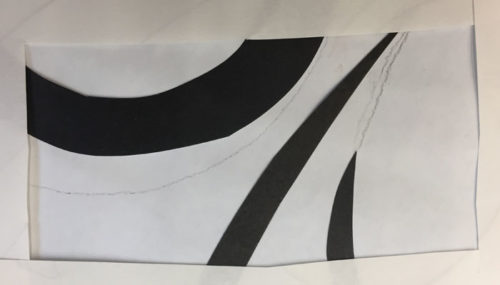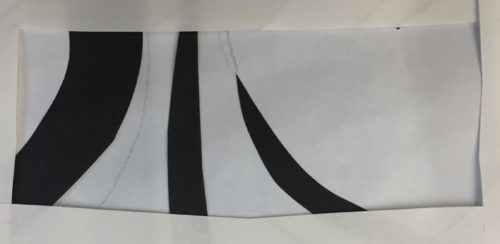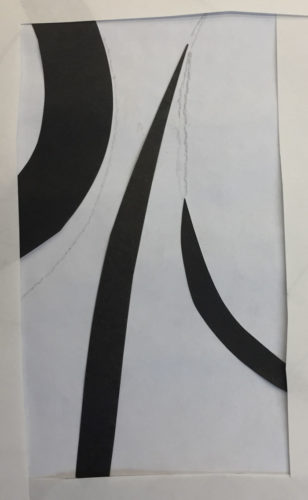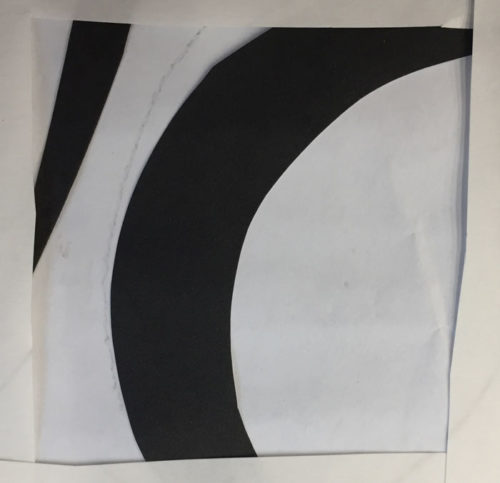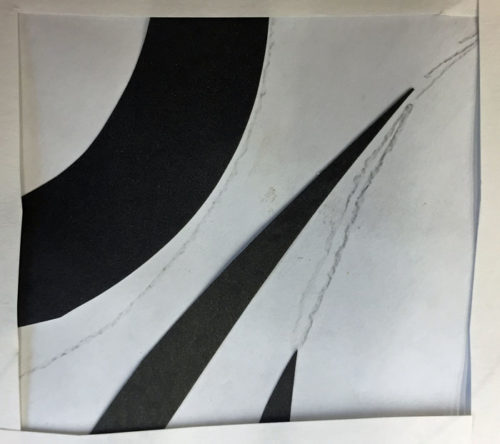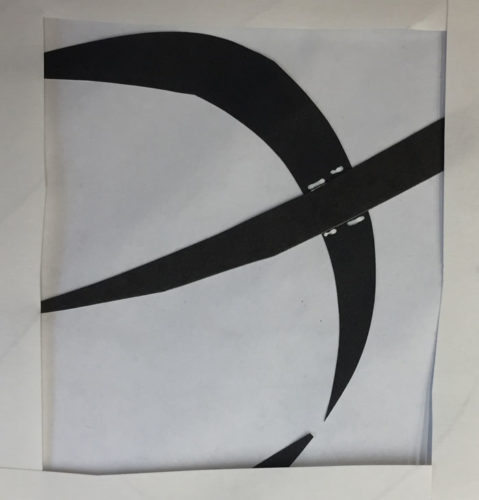Well, now I’ve done it. I’ve dipped my toes into learning more about abstract design and have become – what is it the Borg say? – ASSIMILATED! At least for now.
I “blame” Jane Davies. She wrote an excellent book, which got me going. It’s called “Abstract Painting, The Elements of Visual Language.” It was that last part that attracted me. I didn’t want to do any painting, but I DID want to learn Jane’s way of approaching design, because her pieces are wonderful.
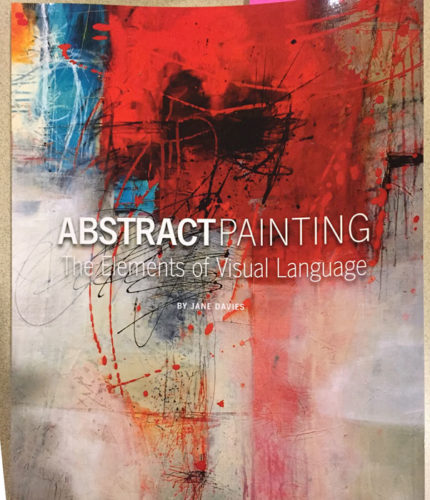
So, I started STUDYING her book, doing every exercise multiple times and creating a few more of my own. (Like I said, “assimilated.”) My plan was to do my own exercises in fabric and thread, rather than paint.
The first was to experiment with mark making. Not only in the shape/line/thickness of the mark, but also in the technical materials and processes with which the mark was made. I did this.
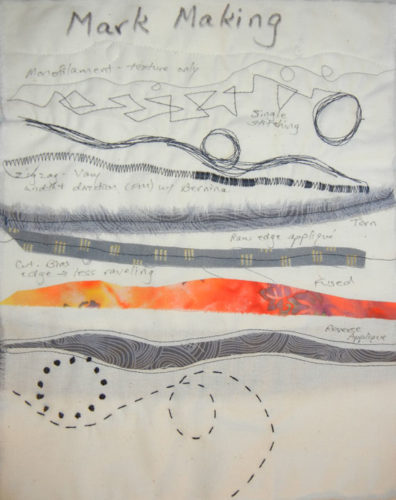
It was a good reminder of ways to add marks that I don’t use very often. Like that sketchy stitched multi-line near the top. That’s pretty cool, right?
Jane is brilliant with line and after reading her approach and looking at her examples I was ANXIOUS to use more of it.
Next, I did collage exercises with various prompts. This one was meant to be shapes I don’t use that often. I used primarily scraps and altered their shapes very little.

Note: I was NOT trying to make great art here. The emphasis was on learning, so I purposely ignored balance, etc. I just played and it was exhilarating!
Next, I shifted to magazine pages as my collage material of choice. This one was my response to a high contrast assignment.

This was great fun. I used shapes that were not in my usual wheel house, with a variety of edges. And by now I was getting enamored with the idea of line, so I found myself adding it even when it wasn’t requested.
Here’s the low contrast result. (See that low contrast line again?)
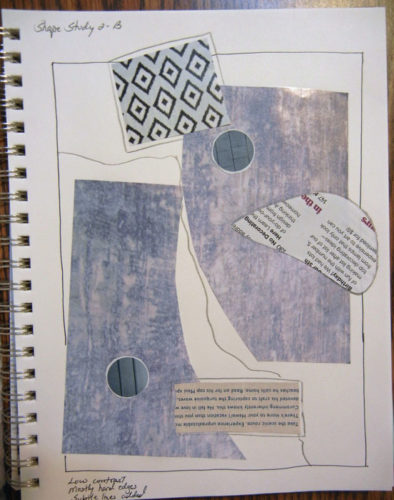
The next assignment was to create a composition with lots of negative (background) space. No problem.
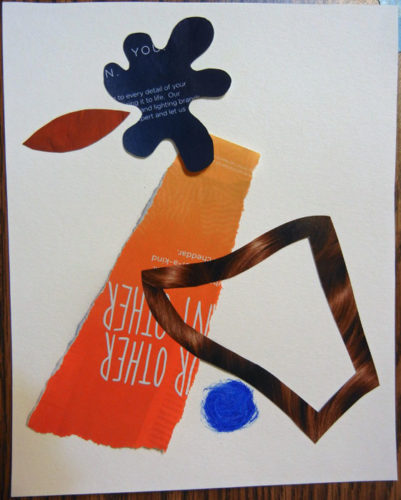
But then I got myself in trouble. I decided to emulate Jane’s example of painting over elements, adding new ones, and completely altering the piece. I did NOT have the skill set for that! Here’s my result.
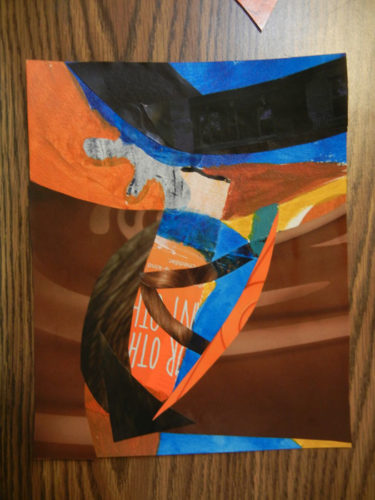
Oh my gosh! Can you say “hideous?” Not wanting all this effort to go to waste, I decided to look for viable small compositions within this larger one. I used white paper to isolate small sections and found many wonderful options. I photographed each one.
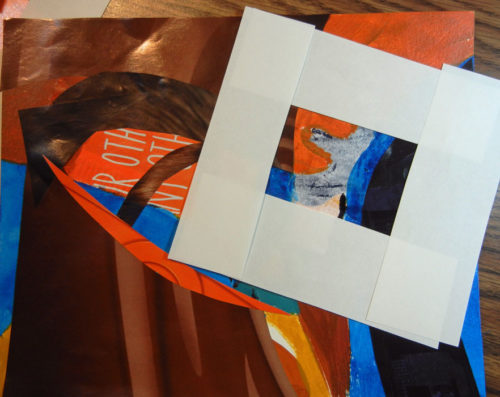
Okay, so all those little compositions made me feel better about this piece. Not that I really felt bad to begin with. I KNEW I was experimenting and learning, so I wasn’t expecting awesome results.
This is just the beginning of what I’ve been up to. I’ve got lots more to show you.
Ellen Lindner
